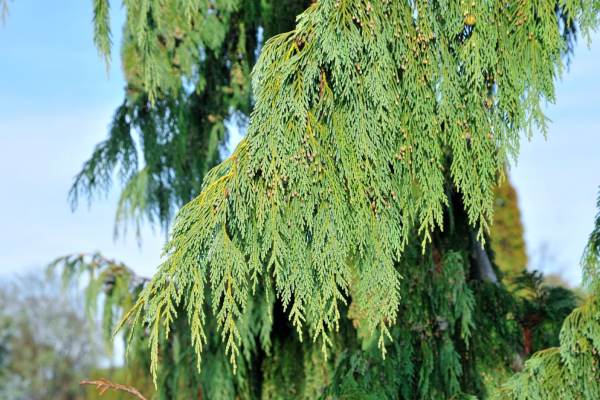Some gardeners might have trouble picking their favorite evergreen tree. That’s not in my case. If you ask me, I will tell you it’s the evergreen tree I prefer above all others the weeping Alaskan cedar. Scientifically known as Chamaecyparis nootkatensis (or occasionally by its newer genus, Xanthocyparis), this tree is a true winner. I will tell you more facts about this amazing tree and hope that you will love it too after knowing about it.
What is weeping Alaskan cedar?
Weeping Alaskan cedar is a beautiful tree and the texture of a flat-needled boughs is soft and wispy. Do not fear since there are no sharp or painful needles. Because of its blue-green cast, some even call it the weeping blue Alaskan cedar too. The soft pyramidal shape of the tree and its weeping habit make it a great landscape plant. When the growing season, tiny 1/3 inch brown to burgundy cones appear at the tips of the needles but mostly on mature plants.
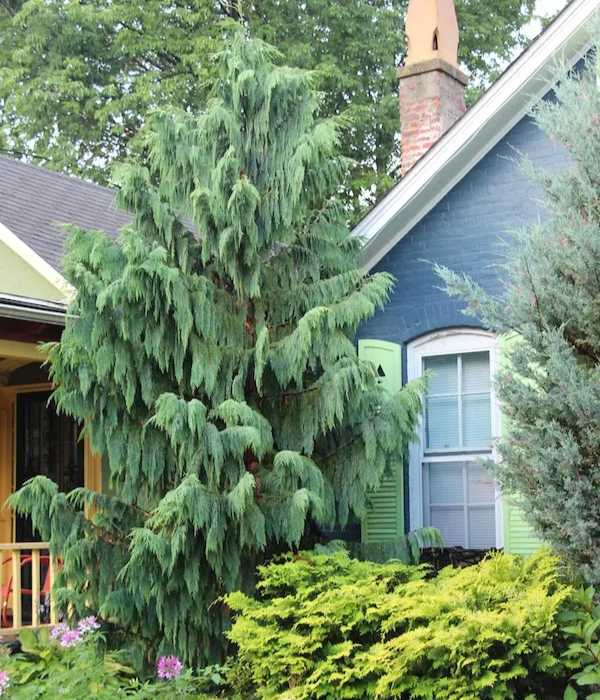
The weeping Alaskan cedar is also known as the Nootka false cypress and the yellow cypress. What many don’t know is that it is more closely related to the cypress than it is to cedars.
Also, Read How to Grow and Care for Cordyline Plants in Your Garden
How tall can weeping blue cedar trees grow?
Since this evergreen tree is native to the region of North America, you will find them in the forests from Northern California up to Alaska. This tree has also been very common in backyard cultivation, particularly the cultivar known as Pendula. In the wild, the Chamaecyparis nootkatensis can reach an astonishing height of 100 feet and approximately 20 to 30 feet after decades of growth. But that’s not the case in garden settings as they reach the height of only 30 feet and that too with a spread of equal to half of that.
Winter hardiness of weeping Alaskan cedar
Weeping Alaskan cedar thrives the most in moist soils in areas where constant moisture is present all year round. According to the USDA hardiness zones, the hardiness of this plant is 4 through 7. When translated into the corresponding temperatures on the hardiness zone map, this means that the Alaskan cedar is winter hardy down to about -30 degrees F. This tree is a great species for the whole northern part of the US, the majority of Canada, and places that have similar climates. It will not do well too far south of the 40th parallel where the summers and soil are too hot and dry.
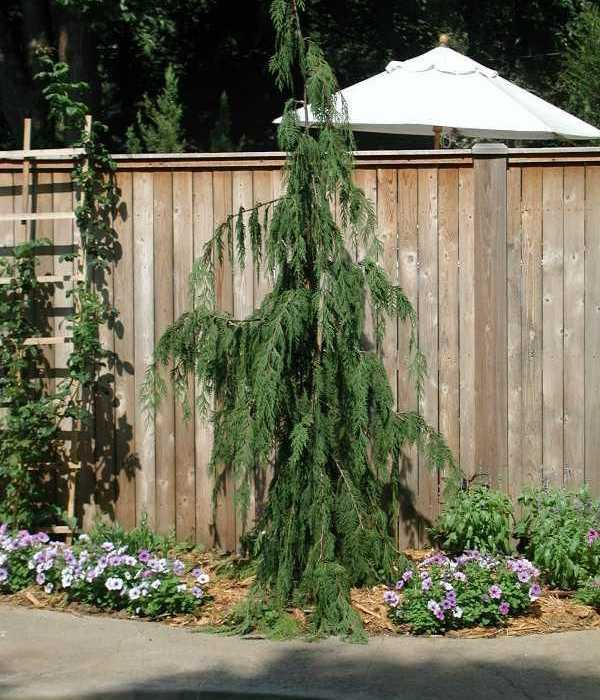
Weeping Alaska cedar varieties
There are a few cultivated varieties of this plant that are very common in the nursery trade:
- Chamaecyparis nootkatensis ‘Pendula’: This is the most common cultivar we find for sale, especially in the eastern US. I too have one in my garden in Pennsylvania, and they are doing great. The branches are often pendulous on this selection, and the lower branches often touch the ground. This evergreen tree looks elegant and can grow up to 35 feet tall and 12 feet wide.
- Chamaecyparis nootkatensis ‘Green Arrow’: This tree is also called the green arrow weeping Alaskan cedar, this variety grows into a very narrow spire. It can reach a height of 20 feet and a width of almost 2 feet. Green Arrow could be the perfect one for you if you have a small garden or yard. It creates a strong, vertical accent in the landscape.
Where to plant a weeping Alaskan cedar?
These trees grow very large and their beautiful branches spread wide, so don’t try to sandwich them into a small space until you’re growing the small space cultivar ‘Green Arrow.’ Give them graceful plants enough room to thrive and show off.
Choose a place that gets full sun throughout most of the day. Make sure the location has moist soil but is not waterlogged. Consistently moist soil is needed so if you have a low-lying area, this tree is ideal. But, standing water is a big NO. The site must also be such that is protected from harsh winter winds. Strong winds can cause needle or branch defects and even die-back if winters are harsh and windy. Despite being very cold hardy, the weeping Alaskan cedar doesn’t do well in high-wind areas.
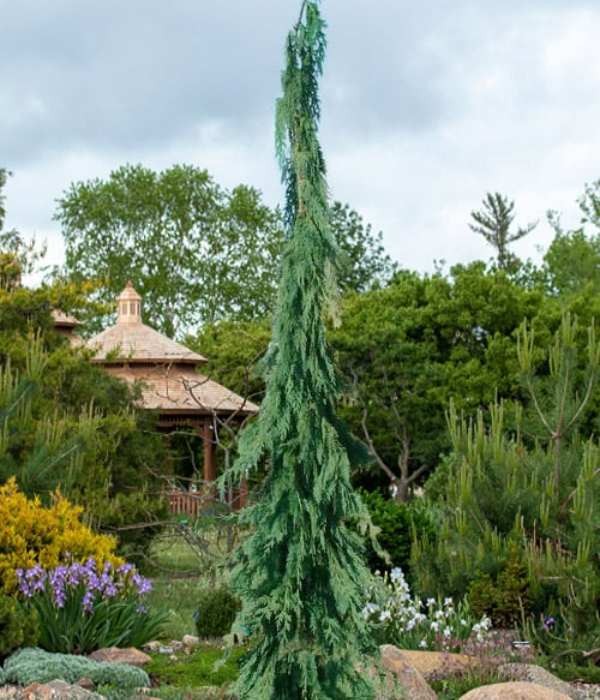
Problems with Chamaecyparis nootkatensis
Luckily, there are only a few problems that affect the weeping Alaskan cedar. One of the biggest reasons to love this tree is its pest resistance. No serious pest infestation can be found, though I have occasionally seen a bagworm playing on the branches. Only sometimes, spruce mites can be problematic. If you increase a good population of useful insects in your garden by having a lot of flowering plants, the mites issues may decrease.
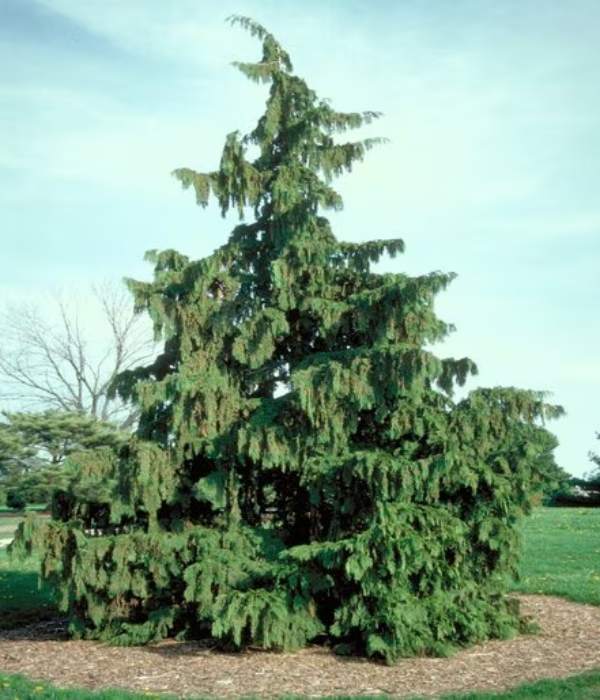
This tree also fairly tolerates roadside pollution, though keeping it away from sidewalks, roads, and driveways that are routinely treated with road salt in the wintertime is suggested. You can also use a plant- and pet-safe ice melter to protect your plants from further damage.
How to care for weeping Alaskan cedar
Thankfully, these trees do not need much care and maintenance.
- Mulch the plant with a 2- to 3-inch layer of shredded hardwood mulch. This helps to maintain consistent soil moisture and limits weed competition. Do not pile mulch against the trunk of this or any other tree.
- Pruning is not for the weeping Alaskan cedar. Just like pruning Japanese maples, if you prune this plant, you ruin its lovely form. You better give your tree to grow to its full size right from the beginning and do not prune it at all.
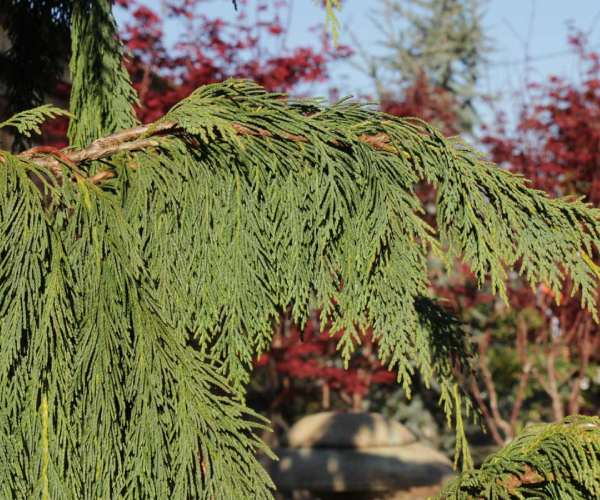
- Water the tree consistently until mature. If you plant it in the area where it gets everything it needs like a good sun, you don’t have to worry about any supplemental water except during periods of extreme drought.
- As for fertilization, you can fertilize this tree every few years with an acid-specific granular organic fertilizer.
An all-around great evergreen tree, the weeping Alaskan cedar is worth having in your garden. Just make sure, you are providing it with the right conditions and site properly. Make some room for this elegant tree and it will make your garden look good for many many years to come.
FAQs
Q: Can you trim a weeping Alaskan cedar?
A: While you can prune the weeping Alaskan cedar in late winter, prune only when necessary to keep the natural beauty and form of the tree. Many gardeners do not prefer pruning the tree.
Q: Why is my weeping Alaskan cedar turning yellow?
A: It’s a normal cycle all cedar trees go through. Here’s how it works: around late summer or early fall, cedars and most conifers need to let go of older, interior needles that are no longer doing the tree much good. Those needles turn yellow/brown as the tree phases them out and makes room for new growth from the tips.
Q: How do you manage a cedar tree?
A: If the trees are small, water them regularly and allow them to dry out between waterings. Only fertilize if you know that the soil is unhealthy. Once established, these trees require more than regular mulching and removal of dead or diseased branches.
Also, Read How to Get Rid of Chipmunks in Your Yard and Garden
